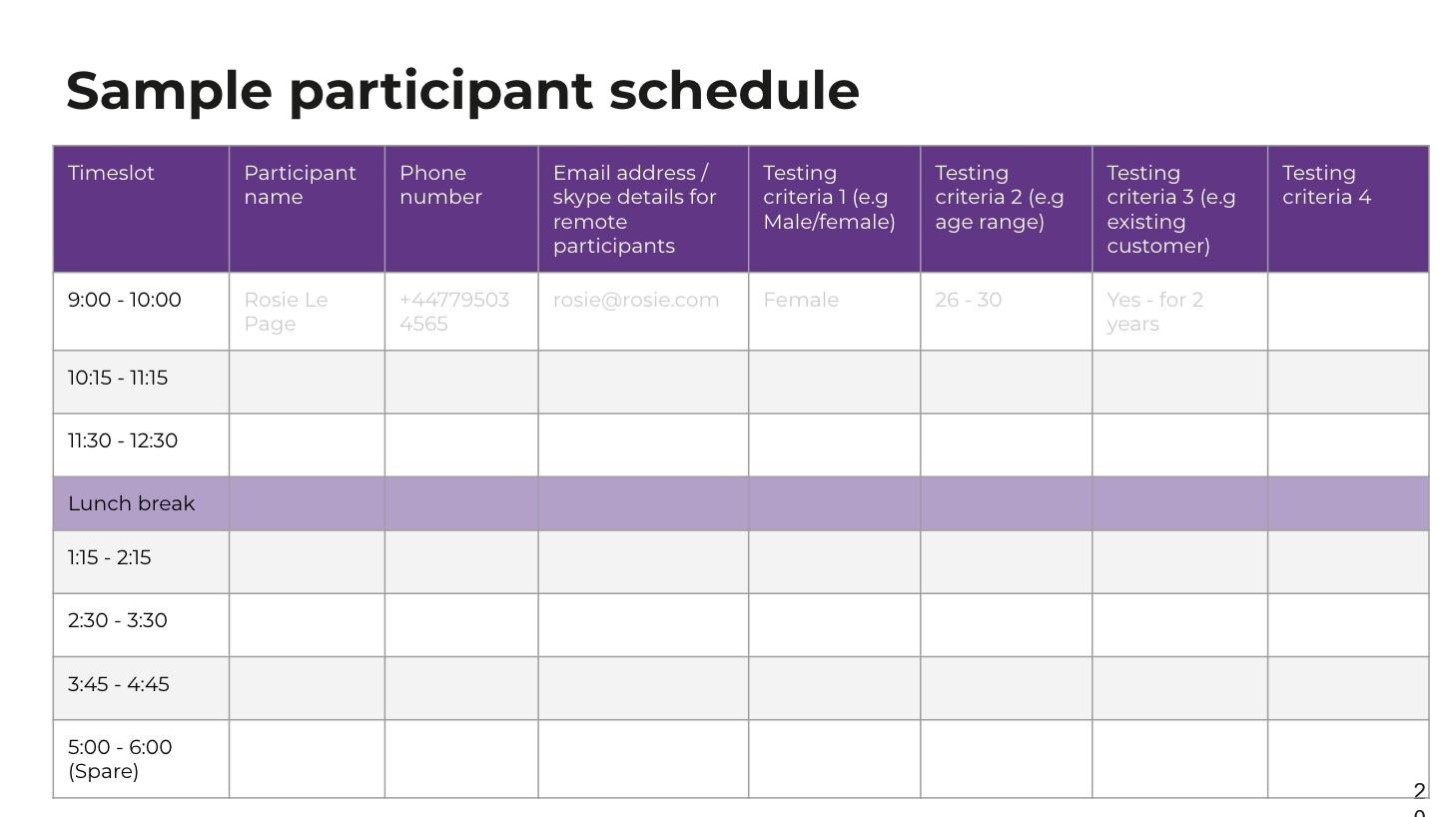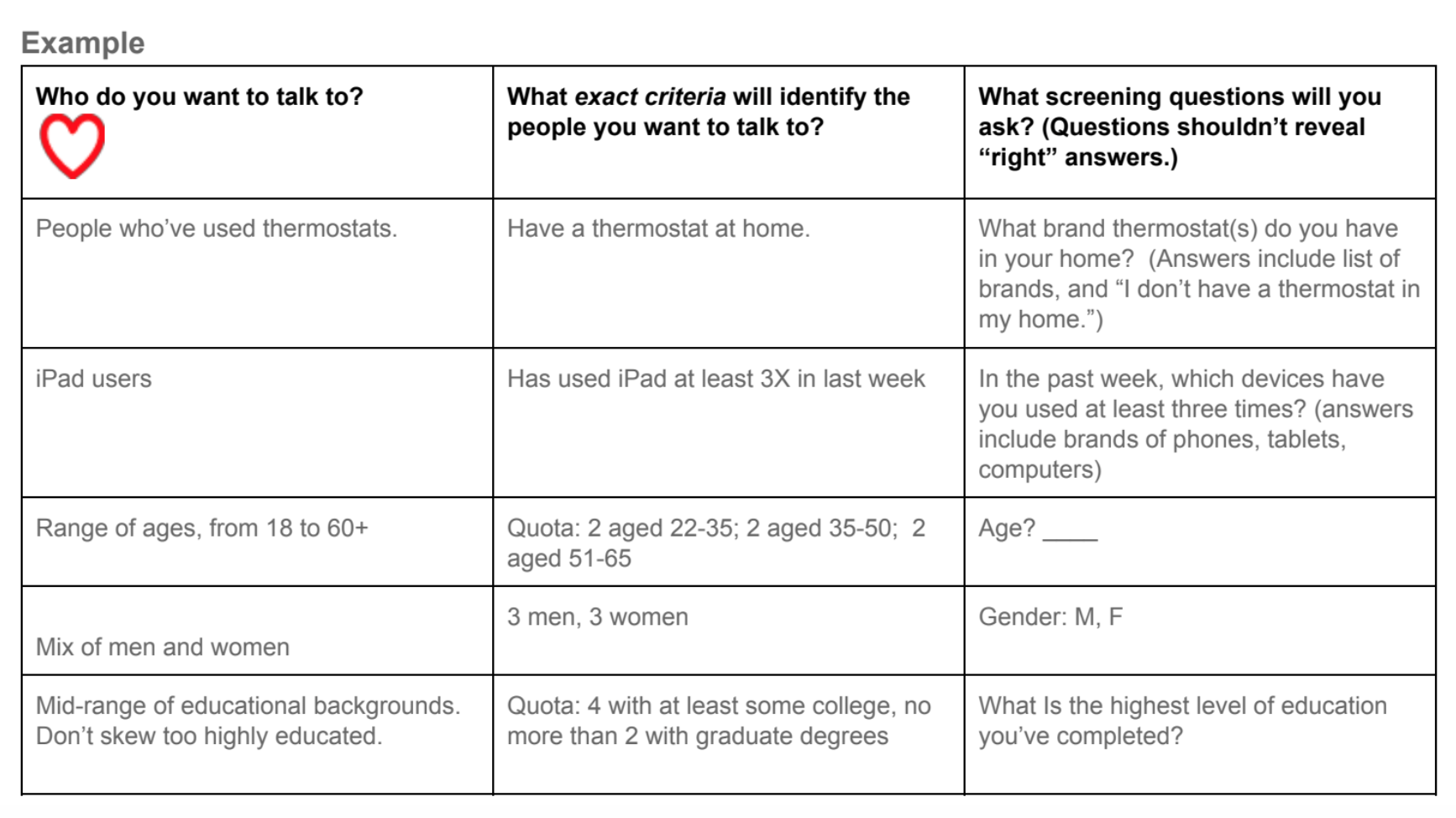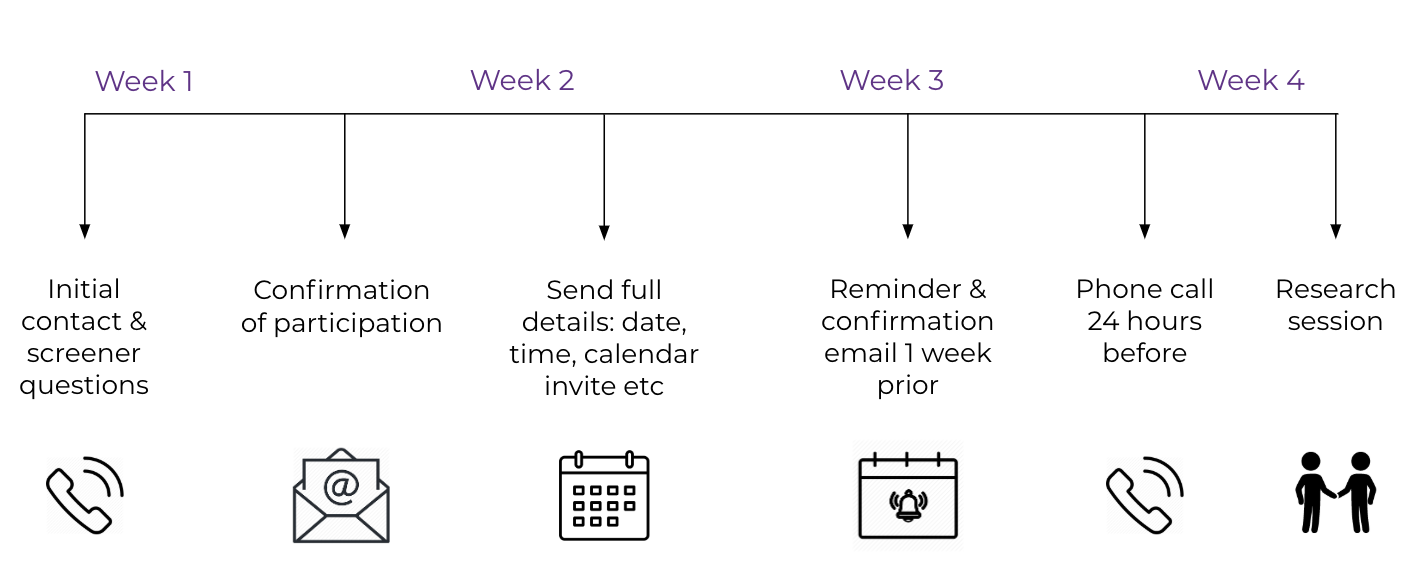Recruitment for research: prime your user research for success
User research is a crucial part of the experience design process. But the approach you take in recruitment for research impacts the quality of customer insights you uncover.
Here we look at how to prime your user research for success with the right recruitment for research tactics.
Recruitment for research fundamentals
Preparation is everything when it comes to getting the best possible insights from your user research. That’s why it’s so important to be clear on roles and who’s doing what.
The first decision in user research recruitment is whether you'll manage the entire recruitment process internally, or delegate some – or all – of that process to an external partner such as Inviqa.
These are some of the different ways to handle the process of recruitment for research:
- You do all of it. You’re responsible for finding, contacting, booking and paying participants i.e. you take responsibility for the whole process. Many people believe you can reduce spend be doing recruitment in-house, but you should also consider whether you can dedicate enough internal resources to make the process successful.
- You do some of it. This is an approach we often use here at Inviqa when, for example, it’s useful to have an even split between prospective and existing users. We then source the prospects, and our clients source existing users.
- Outsource most of it. If you need to recruit from a specific pool of people (for example a database of people who’ve consented to be contacted), one option is to give the list to your agency who can run the recruitment process for you using the pool of people who have consented to being contacted by select third parties. This can save a great deal of time and effort than having your agency compile the list themselves.
- Outsource all of it. The main benefit of outsourcing is that you won’t drain the time of your internal staff, your agency will look after everything for you (from the brief, to sourcing prospects and recruiting them) and it’ll take very little effort from you. If you’re looking to outsource the entire recruitment process, you’ll just need to sign-off a recruitment brief with Inviqa, or whichever third party you’re using.
Which research recruitment route is right?
The general rule of thumb is that it’s almost always better to use a recruiter to do your participant recruitment for user testing (or usability testing). A recruiter is super experienced in this area, so this route is generally faster, easier to manage, and more cost-effective than trying to manage the process in-house.
However, there are some situations where doing your own recruitment for research be appropriate.
You might, for example, need specific subject matter experts that you’re best placed to find. Or you might be looking to test existing customers for a niche product or service you offer. Another example might be a charity catering for people with a rare disease.
In all these cases you could potentially save time and budget by going straight to your database or contacts, rather than having an external partner track down a niche user group.
What's next in the research recruitment process?
Before starting your user research, you'll need the following?
- Dedicated resource. Recruitment takes a lot of time! Allocate at least one hour per day for the duration of the recruitment process to allow for logistics and participant liaison. Pick someone who likes organising! If you don’t have this in-house resource, it may be time to think about working with a third party.
- Recruitment brief. Make sure you are crystal clear in terms of who you’re looking for based on your research objectives. Your Inviqa consultants will put this brief together for you, but if you have any questions, just ask!
- Participant schedule. Set this up from the start so you can track interest and leads for different time slots; it makes organisation so much easier.

Above: an example of a participant schedule
Tips for international recruitment for research
International user research recruitment can be tricky, but you can avoid basic mistakes by:
- Including time zone conversions within your participant schedule (use a tool like TimeandDate.com to help with that)
- Including the right country codes for calling from the UK if you’re doing remote phone calls
How to use internal staff for research recruitment
There are some situations where it makes more sense for your staff – perhaps account managers, relationship managers, brokers, and so on – to handle the recruitment conversations for you.
However, since it’s not part of their day job, here are a few tips for helping this process go smoothly:
- The order needs to come from the top. It can be really helpful to get a senior stakeholder to ask for in-house support and cooperation with the recruitment process.
- Consider incentivising. Since this isn’t part of the day job, perhaps you can offer account managers a sweetener to further incentivise them to support the recruitment process.
- Provide your recruiting team with a script. It’s important that people feel confident when they phone potential participants and are able to converse clearly about the recruitment criteria and process. It’s likely your team won’t have done this type of recruitment before, so giving them a script will help them enormously.
The key steps in research recruitment
It’s important you give yourself enough time to complete recruitment. Here at Inviqa we typically allow at least three weeks lead time for participant recruitment.
If you don’t have this time, then consider moving the research dates.
Key steps in the recruitment process are as follows:
- Write research objectives
- Define recruitment brief and write the recruitment screener
- Create your testing schedule
- Contact potential leads to fill your scheduled slots
- Start filling slots (fill all slots at least 48 hours ahead of the sessions)
- Double-check that participants are still available and remind them of the location/ time of their session 1 week before and 24 hours before the session
How to identify user research participants
You’ll need to carefully consider which users you need to test to get valid, unbiased results.
Some of the things to decide are:
- Do you need to test with new or existing users?
- Do you need to speak to people who use your competitor’s products or services?
- What attitudes or behaviours do you need people to have so that they can realistically engage with what you’re researching? (e.g. if you want to test an app for buying used cars, you want to research with people looking to buy a car in the near future)
- Will the people you’re looking for actually be able to use what you’re putting in front of them? How will you ensure this? If you’re testing a website, ensure your participants are competent web users. If you’re testing on a smartphone, make sure your participants are familiar with using iPhones phones, for example. In the latter example you’d risk the results being warped if the user has never used an iPhone before, because they may well find every task difficult.
Tip: ensure the people you’re testing haven’t already taken part in user testing in the last year as this could bias their answers
How to write a screener for research participants
As part of the user research recruitment process you'll need to ask lots of questions to make sure you get the right participants. For example:
Q: How long have you been a customer with us?
A: 3 years
If your criteria was customers of a minimum of four years, the above would be a FAIL & CLOSE screening.
When framing your recruitment screener questions, be aware that some participants may lie to get through the screener. Use open questions, or include responses that you’re not looking for, to make this more difficult for them to do.

Above: example of a recruiting screener for user research; images via Google Ventures
How to incentivise participants
Paying your participants an incentive can help prevent (if not completely eliminate) dropouts and no-shows. How much you pay depends on the type of participants:
- Standard recruit: a typical incentive is around £60 (suitable, for example, for a mass-market consumer of a product or service).
- Time-poor individuals: payment fees rise to £150-200 range (for example, for medics, small business owners, CEOs, and so on). Check gift policies at your participants’ organisations, because offering a charitable donation might be the most appropriate option in some cases.
- Recruiting internal staff or colleagues: this can be tricky if people think these meetings are casual or optional. Make clear the commitment they are making by agreeing, and ideally signing off the time, with their manager to ensure they’ll be able to make it.
Not allowed to give cash? No problem; most people are happy with Amazon vouchers or similar but be sure to communicate this clearly before they agree to participate.
If you can’t arrange this internally speak to Inviqa and we’ll make alternative payment arrangements for you.
Tip: According to the Market Research Society Code of Conduct, you’re not allowed to give away your own products as an incentive
Where to find user research participants
Consider the following tried-and-tested methods for finding your research participants:
- Marketing database/CRM system: consider whether you have permission to contact them for any reason other than marketing
- Website banners: it typically takes time to get traction, so leave enough lead time
- Social media: as above, this can also require a longer lead time
- Existing customers with whom you have a good relationship (but be careful of bias)
- Guerilla recruitment: Need customers who shop in supermarkets? Go to Tesco! (you often need permission to conduct research on someone’s premises, so always ask first)
Tip: don’t forget GDPR! Are you allowed to contact these individuals for this purpose, and how will their data be handled going forward?
How to brief research participants
Avoid issues, misunderstandings, and headaches with clear communications. It’s important to be crystal clear with the logistics in advance of your user testing.
Help your participants gain a clear understanding from the outset across the following areas:
- What the session will be like
- Where the research venue will be
- When the research will take place
- How to get in touch with you
- Who to contact/ talk to about incentives following the research session
Top tip: always address your participant by their formal title i.e. if they are an academic you may need to call them ‘Dr’ Ruth Jones
Don’t assume that once you’ve booked your participants you’ve finished the job!
Reach out to participants at sensible points in time to ensure they’re still engaged and available to participate.
Depending on how far in advance you’ve booked them, you should send reminder emails one week before, and ideally speak to them on the phone at least 24 hours prior to testing, to reconfirm and remind them of their time slot and the research venue.
Getting people to actually turn up is arguably the biggest challenge of the whole process. Make sure you are 100% confident they are coming before you put down the phone!
Likewise having a clear plan for what you need to do when will help a lot.

Prime your user research for success
Here at Inviqa we conduct insightful qualitative and quantitative user research into your target customers.
We tailor our research approach to your aspirations and available resources, with an emphasis on uncovering the most valuable insight in the shortest-possible time frames.
And we work collaboratively so that your organisation can begin developing your own user research capabilities.
Drop us a line today to discuss your needs and questions with our of our experience design consultants.
About the author
Rosie is an experienced account director leading UX design projects at Inviqa for the likes of SSE Energy, Vodafone, and Weatherbys Bank.





